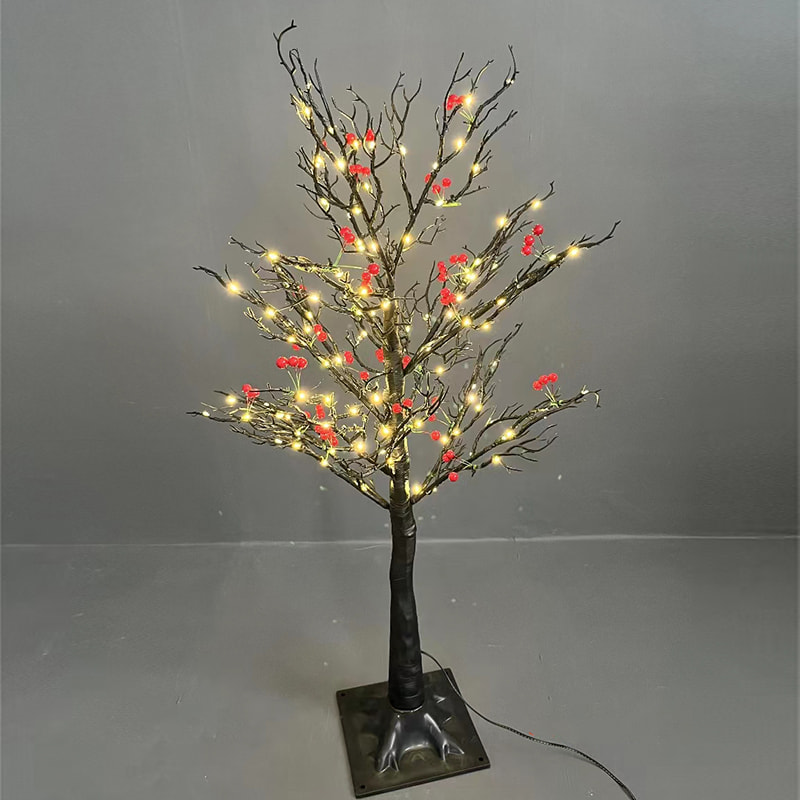Shuangzhai Industrial Zone, Dongcheng Town, Linhai City, Zhejiang, China.
The character of indoor lighting can significantly affect how a space feels during evening hours. Among decorative options, the Twinkle Willow Tree Light and LED Table Tree Light are often chosen for their gentle illumination and natural aesthetic. Their ability to create a sense of warmth depends on several technical and design-related factors that go beyond appearance. Understanding these elements helps users choose the right product for their homes, ensuring that the lighting aligns with both comfort and function.

One of the key aspects that determine the warmth of an LED table tree light is its color temperature, typically measured in kelvins (K). Warm white light, which ranges between 2700K and 3000K, emits a yellowish tone that feels inviting and calm, similar to traditional incandescent lighting. This color temperature promotes relaxation, making it well-suited for bedrooms, living rooms, or reading corners.
Cooler tones, such as 4000K or higher, produce a brighter and whiter glow, which may appear cleaner but can feel less cozy. For users seeking to replicate a natural candlelight ambiance, the warmer spectrum is generally preferred. Both the Twinkle Willow Tree Light and LED Table Tree Light often utilize LEDs that lean toward the warm white range, offering gentle brightness without glare.
The materials used in the construction of these lights directly influence how the emitted glow appears to the eye. LED bulbs enclosed in semi-transparent or frosted coverings distribute light more evenly, reducing sharp contrasts and producing a softer illumination. For instance, branches designed with translucent coatings allow light to pass through subtly, spreading warmth throughout the surrounding area.
The arrangement of LED bulbs along the branches also plays a role. Evenly spaced lights ensure a balanced distribution of brightness, preventing certain areas from appearing too bright or shadowed. This diffused lighting effect enhances comfort, particularly in smaller rooms where harsh lighting can easily overwhelm the space.
The design of the branches and leaves has a visual influence on how users perceive the light’s warmth. Curved, flexible branches on a Twinkle Willow Tree Light tend to direct light both outward and downward, creating an enveloping glow. In contrast, the upright branches of a typical LED Table Tree Light emphasize vertical illumination, making it effective for corner lighting or as a centerpiece on side tables.
The positioning of the tree within the room also affects how warm the light feels. When placed near reflective surfaces such as walls or mirrors, the illumination bounces back softly, doubling the perceived brightness while maintaining a gentle tone. Users looking to enhance warmth can experiment with placement near textured backgrounds, such as wood or fabric, which naturally absorb and diffuse light in pleasing ways.
Not all LEDs produce identical lighting effects. The type of LED chip used determines not only brightness efficiency but also color rendering ability—the accuracy with which colors appear under the light. High-quality LEDs with higher color rendering index (CRI) values, typically above 80, ensure that colors in the room appear more natural and vivid. This helps maintain the richness of surrounding decor and prevents the space from feeling cold or washed out.
The Twinkle Willow Tree Light often features small twinkling LEDs that alternate slightly in intensity, creating a dynamic visual warmth. Meanwhile, LED Table Tree Lights designed for steady illumination rely on consistent chips that produce a uniform tone. Both designs contribute differently to atmosphere—one through subtle motion, the other through stability—allowing users to select based on their preference for ambiance.
Though LEDs are known for their low energy consumption, the way they handle heat can subtly influence their glow. Efficient heat dissipation ensures stable light quality over time. When LEDs overheat, their color temperature can shift slightly cooler, affecting the perceived warmth. This is why tree lights constructed with metal cores or effective ventilation in the base tend to maintain a more consistent warm hue.
Energy-efficient circuitry also contributes to a smoother current flow, reducing flicker and supporting a steady, pleasant glow. Users sensitive to small variations in brightness benefit from these stable designs, especially in environments meant for rest and relaxation.